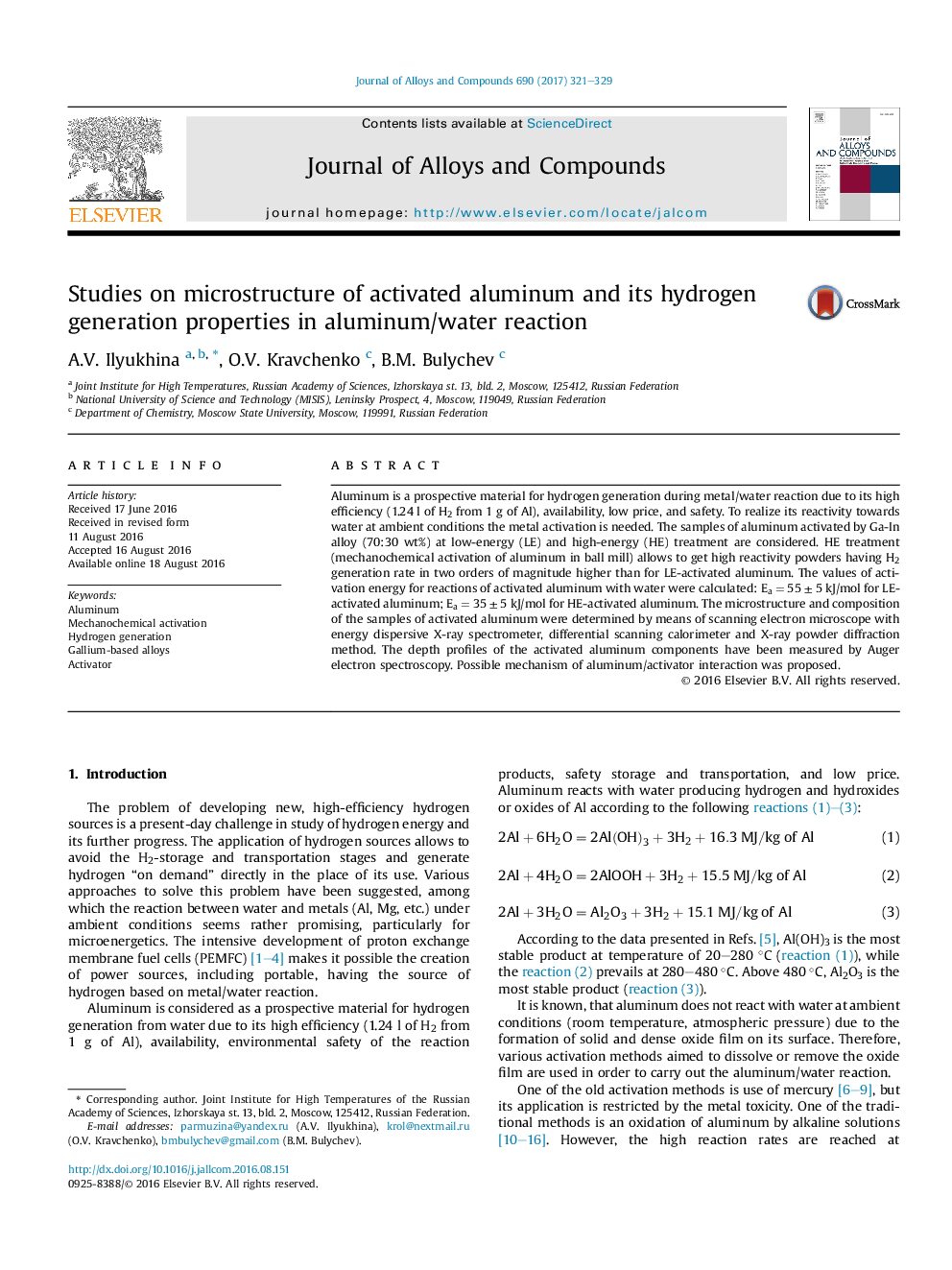| Article ID | Journal | Published Year | Pages | File Type |
|---|---|---|---|---|
| 1604926 | Journal of Alloys and Compounds | 2017 | 9 Pages |
Abstract
Aluminum is a prospective material for hydrogen generation during metal/water reaction due to its high efficiency (1.24 l of H2 from 1 g of Al), availability, low price, and safety. To realize its reactivity towards water at ambient conditions the metal activation is needed. The samples of aluminum activated by Ga-In alloy (70:30 wt%) at low-energy (LE) and high-energy (HE) treatment are considered. HE treatment (mechanochemical activation of aluminum in ball mill) allows to get high reactivity powders having H2 generation rate in two orders of magnitude higher than for LE-activated aluminum. The values of activation energy for reactions of activated aluminum with water were calculated: Ea = 55 ± 5 kJ/mol for LE-activated aluminum; Ea = 35 ± 5 kJ/mol for HE-activated aluminum. The microstructure and composition of the samples of activated aluminum were determined by means of scanning electron microscope with energy dispersive X-ray spectrometer, differential scanning calorimeter and X-ray powder diffraction method. The depth profiles of the activated aluminum components have been measured by Auger electron spectroscopy. Possible mechanism of aluminum/activator interaction was proposed.
Related Topics
Physical Sciences and Engineering
Materials Science
Metals and Alloys
Authors
A.V. Ilyukhina, O.V. Kravchenko, B.M. Bulychev,
